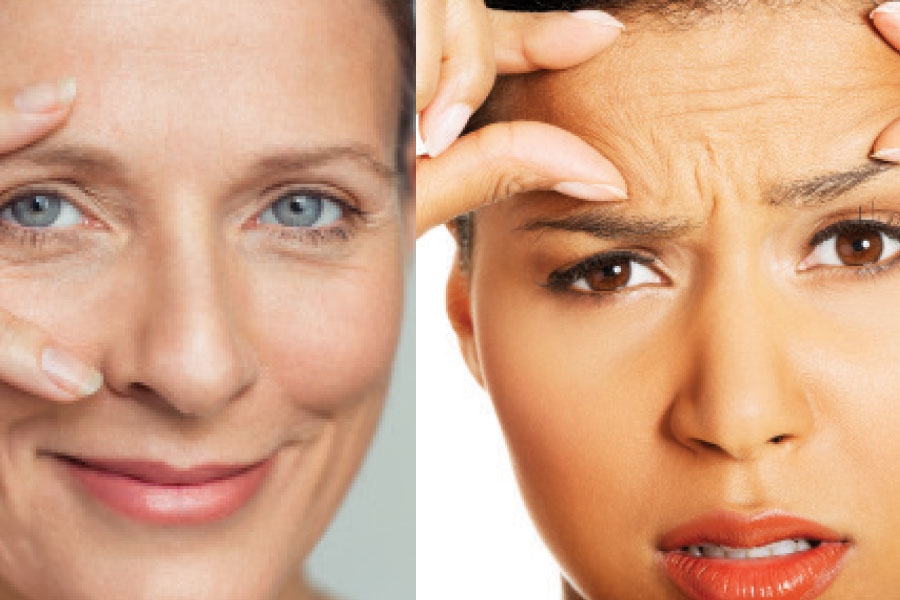Facial movements cause wrinkles.
Written by Anabel de la Vega, certified license specialist and author of TAO – The Art of RelaxationFacial expressions can cause wrinkles due to the fact that striated muscles in the face create limited expressions. The more expressions a person makes the more active those muscles are going to be. In the forehead, there is a muscle called the corrugator which controls forehead movements. The forehead controls the muscles around the eyes, which is why it is more common for those who communicate with their eyes to have fine lines and creases. The skin around the eyes is very delicate, so it must be treated very carefully. Rough movement around the eyes can cause sagging and wrinkles.
Touching the skin often does not cause wrinkles; it is the pull of gravity and continuous movements of facial muscles that causes fine lines and wrinkles, such as smiling and frowning, which break down collagen in the skin.
Wrinkles are a natural part of the aging process. Through the process of aging, the skin starts getting thinner, drier, and loses its elasticity. It cannot be protected by itself anymore and causes fine lines and wrinkles to be noticeable. Free radicals can accelerate the process of aging. Smoking can also cause the skin to wrinkle around the mouth. As it ages, the skin loses its elasticity and collagen, so facial expressions increase due to the lack of moisture and pliability.
Because the face only has a limited range of motion, expressions require muscles to contract and develop different movements. Frowning is one of the most common facial expressions that causes wrinkles, especially in the forehead.
Another cause of wrinkles that occurs on a daily basis is the way a person sleeps. Most do not realize that sleeping on the wrong side or sleeping on their stomach may cause facial movements to activate faster while sleeping.
If a person squints often or never uses their glasses,
they are likely to use more facial movements. Expression wrinkles and sleep wrinkles differ in etiology, location, and anatomical pattern. Compression, shear, and stress forces impact the face to create facial movements that contribute to facial skin expansion.
